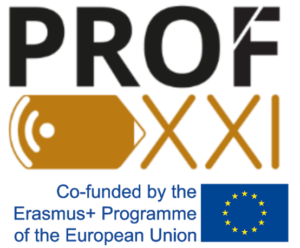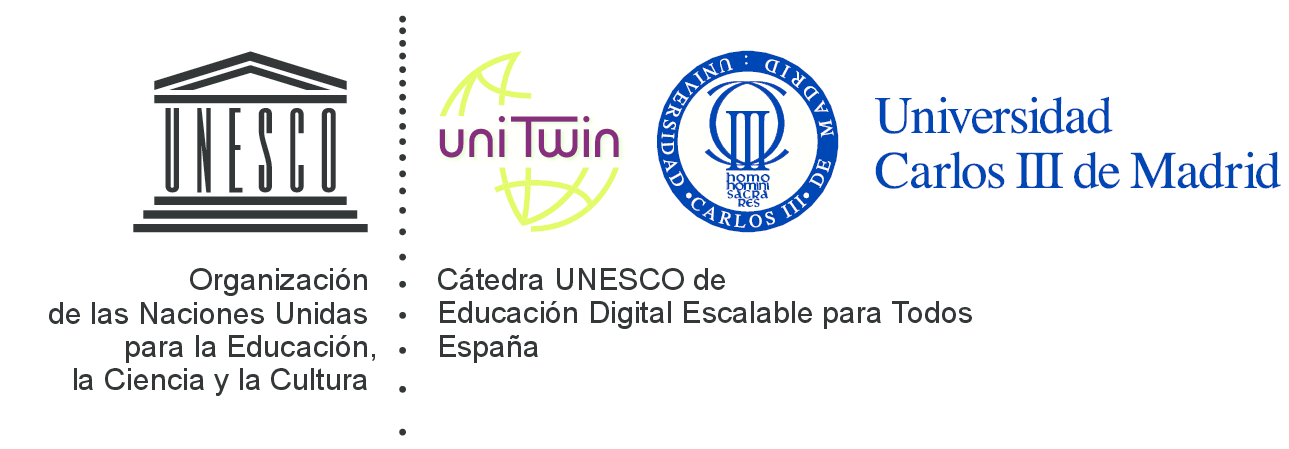In the webinar, «Home-based Educational Content Production: Lights… Camera… Education,» more than 500 viewers from various countries had the opportunity to explore diverse digital resources for learning.
The webinar was presented by the project partners: Mr. Mario Correa from the Universidad de San Buenaventura Cali, Dr. Mario Solarte from the Universidad del Cauca (Popayán – Colombia), and Mr. Iván Martínez from the Universidad del Cauca.
This webinar is part of the Prof XXI project, which aims to design a series of Teaching and Learning Center Models and implement them in four Latin American institutions in Guatemala and Colombia. Additionally, the project seeks to develop management and innovation capabilities among professionals in these centers, create teacher training plans within the centers in three key areas, and promote sustainable cooperation between Latin American and European higher education institutions to establish a cooperative network among these centers.
Within the content of this webinar, the following topics were addressed:
In the webinar, participants delved into the importance of digital didactic resources mediated by Information and Communication Technologies (ICTs). They had the opportunity to explore and learn how to use LearningApp, a tool for designing open-licensed digital educational resources. They also learned about converting these resources into QR codes and other applications.
Under the topic of «Digital Competencies for Teachers,» Dr. Mario Solarte explained that in the Prof XXI project, the competencies of the teaching staff have been aligned with the European reference model.
However, for the purposes of the webinar, the expert focused on the area of digital resources, which encompasses digital, pedagogical, academic, and professional competencies.
These are the skills that every teacher should aim to possess for effective practice in their roles, as emphasized by Mario. In his presentation, he showcased a chart illustrating this model, which encompasses six areas, ranging from professional commitments to professional competencies of the students.
Dr. Solarte presented a classification of levels of a teacher’s ability associated with the production of digital resources for teaching and learning.
In the area of Digital Resources, three competencies are framed:
Selection:
The ability to identify, evaluate, and select digital resources for teaching and learning. In addition, the teacher should know how to consider specific learning objectives, context, pedagogical approach, and group learning when selecting and planning the use of digital resources.
Creation and Modification:
- Modify and build upon existing resources with open licenses and other resources when permitted.
- Create and co-create new educational digital resources.
Management, Protection, and Sharing of Digital Resources:
This pertains to competencies related to organizing digital content and making it available to students, peers, and educators.
- Effectively manage digital content.
- Protect sensitive digital content.
- Respect and correctly apply privacy rules and copyright rights, among others.
Recommendations for Communication and Content Generation Supported by Video from Home:
In this section of the webinar, Mr. Iván Martínez, MSc, shared the most important elements to consider when creating engaging class recordings.
Lighting: In this regard, the expert emphasized that lighting is as important as instructional design or the video’s own audio quality.
For better lighting, he recommended:
- Finding a good location in the home or place.
- Avoiding backlighting.
- Using a well-lit lamp.
Lighting schemes:
- Types of Light:
- Natural (sunlight)
- Artificial (lamp)
- Types of Lighting:
- Key Light
- Fill Light
- Lighting Schemes:
- Single-point Lighting: Natural or artificial light behind the camera.
- Two-point Lighting: Both lights are recommended to be placed at 45-degree angles. The key light should be the stronger of the two, while the fill light helps to soften shadows for balance.
- Framing: This is the selection of the area you want to show within a video. These are like the shots in a photograph, such as the American Shot, Close-Up, etc.
- Recommended Shots for Videos:
- Medium Shot: Shows a wider area of the surroundings. It is recommended to position the camera, computer, or phone at a distance of 1.20 to 2 meters.
- Medium Close-Up Shot: This shot ranges from the head to the middle of the torso. Ivan recommends this shot because it focuses the viewers’ attention.
Camera Angles:
This is something very important to consider because, depending on the camera’s position, a more focused connection with the speaker is maintained.
Camera Angles to Avoid:
- High Angle (Contrapicado): In cinema, this angle is associated with superiority and should be avoided for class recordings.
- Low Angle (Picado): It conveys inferiority and does not focus on the host. It’s also not recommended for class recordings.
- The recommended camera angle for class recordings is the normal angle, which is at eye level.
Sound:
Caring for the image is as important as the sound. Having good audio allows for a better understanding of what you want to convey.
Type of Microphone to Use for Recording a Class:
- Unidirectional Microphone
- Hands-free Microphone
- Headset Microphone
In addition to this, Iván Martínez recommends recording at a time when there are no noises in the area where the recording will take place.
Mr. Mario Correa introduced the web application LearningApps, a completely free platform for using open tools available in different languages.
To provide context, Correa identified certain communication and methodological gaps as something that can lead to student attrition.
To prevent these methodological and communication gaps, he recommended the use of virtual tools, such as LearningApps.
This tool is created by teachers around the world who have contributed to the design of digital educational resources for all educational stages, from primary to university level.
LearningApps assists in creating interactive exercises in various disciplines, including sports, arts, science, mathematics, philosophy, languages, and many more.
QR Code
The application is web-based, so it doesn’t require downloading from an app store. You simply scan the QR code using your mobile device or webcam, and the game or application appears on the device you’re using.
Furthermore, it allows you to capture the HTML code for use in a virtual classroom. Another advantage is that it can be used in offline mode, without an internet connection.
COMMENTS FROM PARTICIPANTS
- Judith Salinas: «Excellent Conference. Greetings from Santiago, Chile.»
- Gabriela Gordillo Ramírez: «I am amazed by the quality of content you are sharing with us. Thank you very much.»
- Juan Carlos Gómez Alvarez: «Thank you very much for sharing such an excellent tool.»
- Carlos Mendoza Toro: «Very interesting! Greetings from Santiago, Chile.»
- Emilce Adriana Escobar Alvarez: «Excellent presentation, very interesting and useful topics. Thank you very much.»
- Miss Castro: «I am learning a lot. Thanks for sharing this information.»
- Sandra Cuguá: «Excellent, I loved it. Thank you, it will help me facilitate my class and achieve meaningful learning.»
If you missed the webinar, we invite you to watch the recording by clicking on the following link: https://bit.ly/prodedu
Visit the following link to view the webinar presentation: VIEW WEBINAR PRESENTATION




